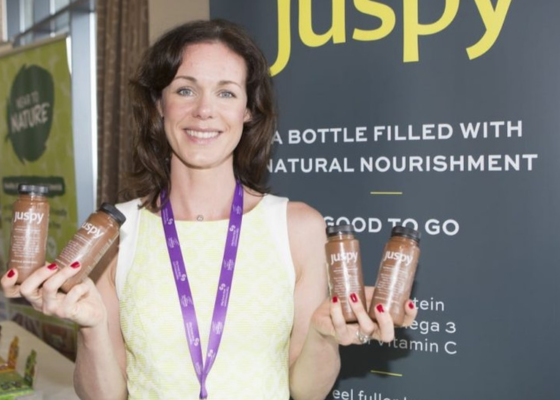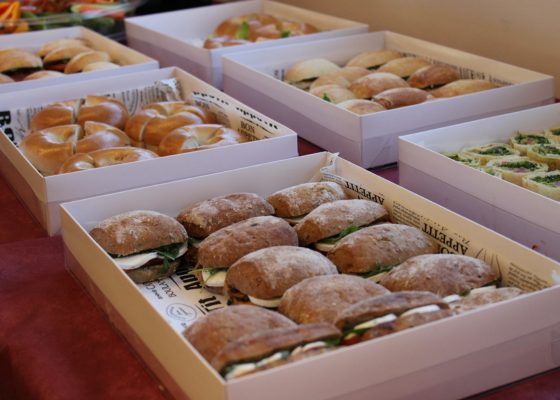John Core at Sodexo
John Core at Sodexo
How Nutritics helped John Core with a reliable, accurate way to manage calorie and nutritional information in his role as Culinary Nutrition Lead at Sodexo.

John Core at Sodexo
Introduction
Company background
John Core first began using Nutritics while undertaking his MSc in Applied Culinary Nutrition in TU Dublin, finding it useful throughout his studies. As a graduate, he brought it with him into his professional life. John now works with Sodexo as Culinary Nutrition Lead, and says, “I use my Nutritics licence within my daily role.”
Sodexo has been operating catering services across the island of Ireland for over 60 years, with a commitment to sustainable, healthy meals.
The challenge
Healthier internal food options
The majority of the catering services provided by Sodexo are in sites where most of the customers have sedentary jobs, meaning they typically expend very little physical energy during their working day.
As a result, John identified a need for lower calorie, yet nutrient-rich dishes across their food programme for corporate services sites.
“We were looking at our menus in terms of macronutrients, trying to figure out what we should be feeding employees at work to manage their energy levels. We had to approach this as a case study. We looked at the average person that we cater for and asked, what is their energy expenditure? What’s their daily commute like?”
Being unable to ascertain people’s physical activity outside of work, e.g. in the gym, John wanted to focus on the information he did have. “One thing we know is that they’re sedentary for most of their work day — so we started looking at the best foods to feed a sedentary workforce.”
Approach
Our solution
From June 2019 to March 2020, two medium-sized sites trialled menus that featured full displays of nutritional values and calorie counts. To accomplish this in a way that was both easy to implement and based on reliable data, John used a trial licence from Nutritics.
The goal was to adjust the recipes and preparation of main dishes at these sites, reformulating them so that they had an average of 600 kcals (with a maximum of 700 kcals). At the same time, fibre content would increase across the menus.
In order to evaluate the results of this trial, customer satisfaction surveys were carried out both before and after the trial period.
A focus on fibre
The revised meal plan included lots of soluble and insoluble fibre. John explains that these were carefully sourced. “We chose to focus especially on whole-plant forms of fibre,” he says, “rather than brown breads and pastas and things like that.” To accomplish this, legumes, nuts and seeds took a prominent place alongside fruits, vegetables and whole grains.
“A lot of the sweet dishes were now based on oats, nuts, seeds and dark chocolate, and we started including a lot more grains and fresh vegetables in our main dishes. In the mornings, we created a lot of oat-based dishes and ones where we could fit in as many legumes as possible, along with other healthy foods like eggs: think breakfast burritos, or homemade beans on toast made with a variety of different beans.”
Nutritics was a valuable part of developing these menus, allowing John to tweak recipes in order to maximise the fibre content.
“Even in recipes that wouldn’t traditionally contain nuts or seeds, we could find some way to boost the fibre. We did a breakfast shakshuka, for example, which already had a lot of vegetables with a poached egg cooked in a tomato broth — but then we added a nut and seed crumble topping. Nutritics let us check the fibre content before and after that topping, which made the difference easy to see.”
Because Nutritics allow users to identify sources of saturated fats, sugar and salt within ingredient lists and to reformulate based on the upper limit parameters of these nutrients, it makes it easy to edit menus. “In every dish, we really tried to edge and edge closer to as much fibre as possible, and Nutritics was perfect for that.”
Result
“The onboarding process was great,” John tells us. “The team at Nutritics was fantastic.” After the initial sedentary study was complete, John also used Nutritics as a case study for Sodexo in their normal menu cycle.
“The guys were good enough to get the Nutritics team to onboard our bank of recipes there, ready to use. That was a huge piece of work,” he says. “Nutritics is very user-friendly, but uploading a whole three-month menu cycle worth of recipes was a huge undertaking, and the team was very accommodating.”
The customer surveys revealed an overwhelmingly positive response to the trial. Overall, 86.7% of the customers surveyed were in favour of keeping the nutritional values on the menus after the trial period had ended. There was a 7% increase in satisfaction around the selection of menu options available, due to a perceived increase in healthier options.
The study found that the reformulation of existing menu items to reduce calories (especially from saturated fat sources) reflected positively on the food offer. The average reduction in calories across all dishes was 14%; higher calorie dishes achieved a greater reduction. Due to the upper limit imposed on calories, some menu items required a reduction in portion size. Impressively, this did not affect satisfaction scores when it came to value for money.
In fact, the results of the surveys showed such positive effects on customer satisfaction that they prompted leadership teams in the trial sites to authorise the purchase of a long term Nutritics software licence.
“It made Sodexo stop and think, ‘okay, we do need this’,” says John. “We sent it over to the UK to be built in-house as part of our recipe development software, meaning we could have a centralised menu system with this sort of technology included. There were some delays as a result of covid, but sites in Ireland are fully mobilised now.”
Beneficial features
John notes a few features that he’s particularly grateful for. The first is Nutritics’ ease of use and the ability to customise ingredients.
“As a chef, being able to whittle down measurements of herbs and spices down to a teaspoon or tablespoon is great, rather than having to think in grams. Nutritics educates as well, which I appreciate: for example, it’ll tell you that a tablespoon is equal to 15ml. I love that it gives information back to the user.”
He mentions, too, that the team was pleased to find that Nutritics included Irish stock-keeping units for ingredients, which were either already stocked by their suppliers or readily available.
“For example, when we’re buying from Sysco, we can find the majority of Sysco products there in the system, and that’s true for other suppliers and products as well. They also have the supermarket varieties, so if you’re buying a certain seasoning or a stock cube or something and you can’t find the specific one you were looking for, you’d know that it was very similar to, say, a Tesco own brand, so you could substitute that one.”
Looking ahead
John has recommended that a web-based software should be made available to food producers in Ireland, with training provided on its use. He specifies that, like Nutritics, “this software must allow the user to identify the sources of saturated fats, sugar and salt within the recipe ingredients and make suggestions to reformulate based on upper limit parameters of these nutrients.”
John wraps up our conversation by looking ahead.
“Now, I’m looking forward to getting a demo with Foodprint,” he says, referring to Nutritics’ new, automated carbon tracking, labelling and reporting software. “The world has moved on, and our business has evolved from a health model to a health and sustainability model. That’s reflected in our Future 50 Foods pledge and through other parts of the business. It’s great to know that’s good for us happens to be good for the planet, too.”

